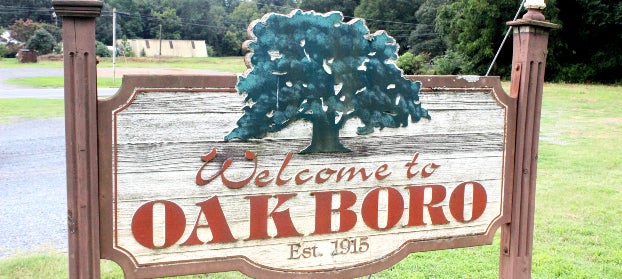South Stanly Middle class creates Certified Schoolyard Habitat
Published 3:25 pm Friday, May 10, 2024

- This South Stanly Middle School class created a Certified Schoolyard Habitat. (Photo courtesy South Stanly Middle)
|
Getting your Trinity Audio player ready...
|
The National Wildlife Federation, the nation’s largest wildlife conservation and education organization, has recognized South Stanly Middle School for creating a Certified Schoolyard Habitat through its Garden for Wildlife program.
South has joined more than 5,000 schools that have transformed schoolyards into wildlife habitats that provide elements needed by wildlife.

“My classes worked to create a wildlife habitat on our campus. The criteria include sources of food, water, shelter, a place to raise their young, and sustainable practices,” said Kristin Owens-White, an enviroonmental connections teacher and N.C. certified environmental educator at South Stanly Middle. “With the help of the North Carolina Museum of Natural Science’s UTOTES program, we installed a pollinator garden and a small garden pond.”

The habitat serves as an outdoor education site where students can engage in learning hands-on.
The certification makes South’s habitat part of the Million Pollinator Garden Challenge, a national effort to restore critical habitat for pollinators.
“We are excited to have another school join our growing list of more than 5,000 certified Schoolyard Habitats. Kids can now personally experience nature through hands-on learning in an outdoor environment,” said Liz Soper, director of K-12 Programs for National Wildlife Federation.
Owens-White said the goal of the Environmental Connections class is “about positively impacting the world around us.”
“We are not only creating a sustainable habitat for wildlife, but we are creating productive stewards in our students for years to come,” Owens-White said.
“We have nesting boxes, and feeders set up for the birds. We have bluebirds, eastern phoebes and house finches nesting right now,” she added. “It did not take long for the frogs to reside in the pond. Soon we will witness many species of pollinators visiting the garden.”
Owens-White said in another area of the campus students are working with a Pfeiffer University professor to create a bee habitat.
“The students had to research native bee species and make a presentation. The students were responsible for building and planting this habitat. This is still a work in progress, but the planting has started,” Owens-White said. “Next year, we will add to this project by researching different bird species and creating boxes and feeding stations on our nature trail.”
“This project was made possible by the students’ dedication and contributions from our community members,” she said.
NWF’s Garden for Wildlife program encourages responsible gardening that helps pollinators and other wildlife thrive. It encourages planting with native species like milkweed and discouraging chemical pesticide use.
With nearly 200,000 locations and growing, NWF’s Certified Wildlife Habitats and Community Wildlife Habitats recognize individuals, schools, groups and communities committed to providing habitat for wildlife, including pollinators. Each of the nearly 200,000 certified locations provides food, water, cover and places to raise young. This makes yards, schools, businesses, places of worship, campuses, parks, farms and other community-based landscapes into wildlife sanctuaries.
For more information on gardening for wildlife and details on how an entire community can become certified, visit www.nwf.org/habitat or call 1-800-822-9919.
For more National Wildlife Federation news, visit www.nwf.org/news.
Editor B.J. Drye contributed to this report.




